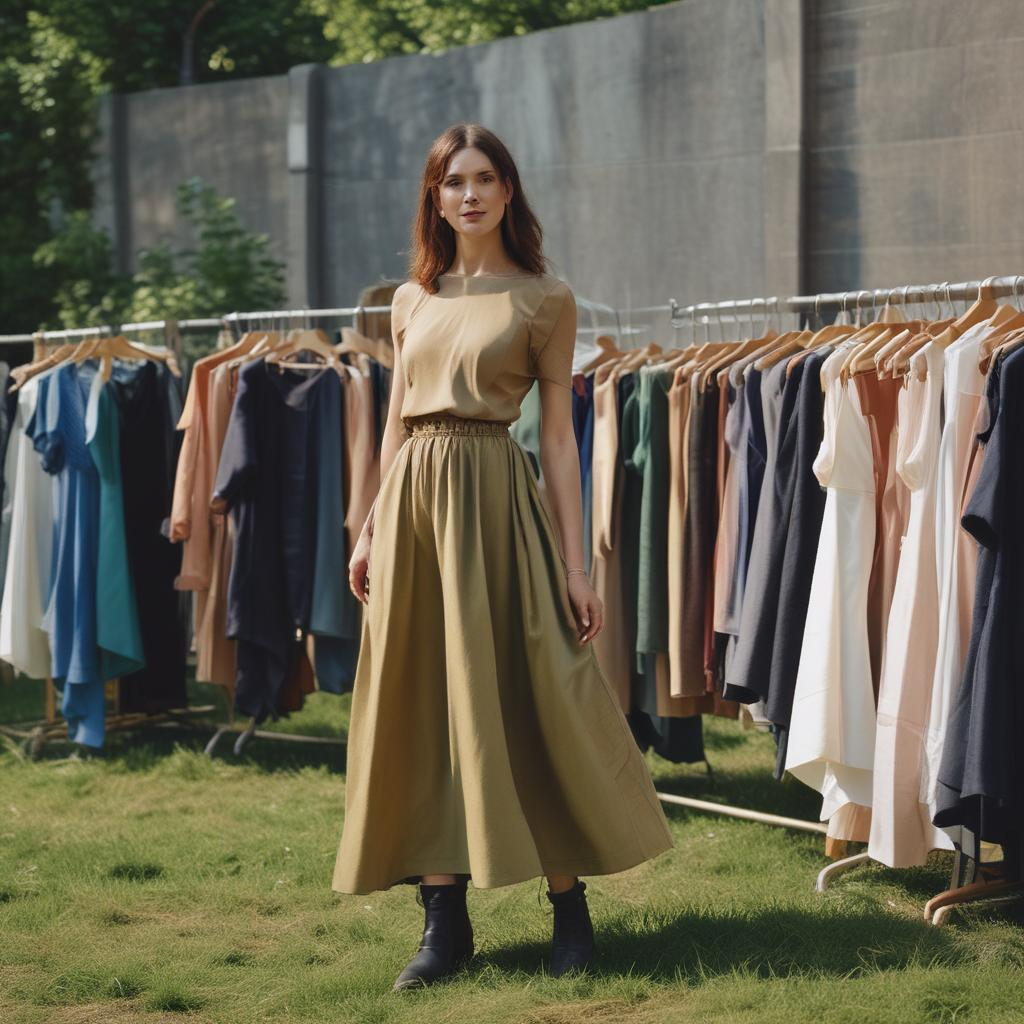In recent years, sustainable fashion has gained significant attention as consumers become more aware of the environmental and social impacts of the fashion industry. Sustainable fashion aims to minimize these negative effects by promoting eco-friendly materials, ethical labor practices, and mindful consumption. This blog post will explore the principles of sustainable fashion, its benefits, and practical tips for making more ethical choices in your wardrobe.

Understanding Sustainable Fashion
1. Eco-Friendly Materials: Sustainable fashion prioritizes the use of materials that have a lower environmental impact. This includes organic cotton, hemp, bamboo, recycled fabrics, and innovative textiles made from renewable resources. These materials reduce the reliance on harmful chemicals and conserve natural resources.
2. Ethical Labor Practices: Sustainable fashion advocates for fair labor practices, ensuring that workers are paid fair wages and work in safe conditions. This includes supporting brands that are transparent about their supply chains and committed to improving labor standards.
3. Slow Fashion: Slow fashion is the opposite of fast fashion, which prioritizes cheap, disposable clothing. Slow fashion encourages the production of high-quality, durable garments that are made to last. It emphasizes mindful consumption, encouraging consumers to buy less and choose timeless pieces over trendy items.
4. Local and Artisanal Production: Supporting local and artisanal production helps reduce the carbon footprint associated with long-distance transportation and mass production. It also helps preserve traditional crafts and supports small businesses and local economies.
5. Recycling and Upcycling: Sustainable fashion promotes recycling and upcycling as ways to reduce waste. This includes repurposing old garments into new designs, using recycled materials in production, and encouraging consumers to donate or recycle clothing rather than discarding it.
The Benefits of Sustainable Fashion
1. Environmental Protection: By choosing sustainable fashion, you contribute to reducing the environmental impact of the fashion industry. Eco-friendly materials and ethical production practices help conserve resources, reduce pollution, and minimize waste.
2. Improved Labor Conditions: Supporting brands that prioritize fair labor practices helps improve the working conditions of garment workers around the world. Ethical fashion promotes social justice and ensures that workers are treated with dignity and respect.
3. Higher Quality and Longevity: Sustainable fashion emphasizes quality over quantity, resulting in garments that are made to last. Investing in well-made clothing reduces the need for frequent replacements and helps build a timeless, versatile wardrobe.
4. Personal Satisfaction: Making ethical fashion choices can bring a sense of personal satisfaction and alignment with your values. Knowing that your purchases support positive environmental and social practices can enhance your overall well-being.
5. Innovation and Creativity: Sustainable fashion encourages innovation and creativity in design and production. From using innovative materials to adopting circular fashion models, the industry is constantly evolving to find more sustainable solutions.
Practical Tips for Embracing Sustainable Fashion
1. Educate Yourself: Learn about the environmental and social impacts of the fashion industry and the principles of sustainable fashion. Research brands and their practices to make informed choices. Websites like Fashion Revolution and Good On You provide valuable information on ethical fashion brands.
2. Buy Less, Choose Well: Adopt a mindful approach to shopping by buying fewer items and choosing high-quality, versatile pieces that you love. Focus on building a capsule wardrobe with timeless, durable garments that can be mixed and matched.
3. Support Ethical Brands: Support brands that are committed to sustainable and ethical practices. Look for certifications such as Fair Trade, GOTS (Global Organic Textile Standard), and B Corp to ensure that the brands you support align with your values.
4. Secondhand and Vintage Shopping: Thrift stores, consignment shops, and online platforms offer a treasure trove of secondhand and vintage clothing. Buying secondhand reduces the demand for new production and gives pre-loved garments a new life.
5. Care for Your Clothes: Properly caring for your clothes can extend their lifespan and reduce the need for replacements. Follow care instructions, wash garments less frequently, and repair items when needed. Simple mending techniques can help keep your clothes in good condition.
6. Host Clothing Swaps: Organize clothing swaps with friends or community groups to exchange garments you no longer wear. This is a fun and sustainable way to refresh your wardrobe without buying new items.
7. DIY and Upcycling: Get creative with DIY projects and upcycling old garments. Transform worn-out clothing into new pieces or repurpose fabrics for other uses. This can be a fun and rewarding way to personalize your wardrobe.
8. Advocate for Change: Use your voice to advocate for sustainable practices in the fashion industry. Support campaigns and initiatives that promote transparency, fair labor practices, and environmental protection. Share information and inspire others to make ethical fashion choices.
Conclusion
Sustainable fashion is more than just a trend—it's a movement towards a more ethical and environmentally conscious industry. By making mindful choices and supporting brands that prioritize sustainability, you can contribute to a positive change in the fashion world. Embrace sustainable fashion, and enjoy the benefits of a wardrobe that reflects your values and supports a healthier planet.


.jpg)




.jpg)



.png)

0 Comments